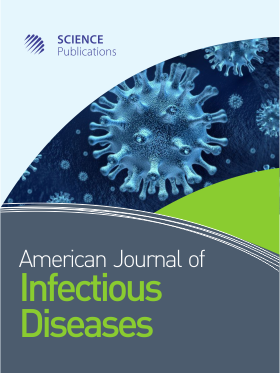Mortality among HIV-Infected Patients in Resource Limited Settings: A Case Controlled Analysis of Inpatients at a Community Care Center
- 1 Institute for Molecular Medicine and Infectious Disease, United States
- 2 Drexel University College of Medicine, United States
Abstract
Problem statement: Despite massive national efforts to scale up Antiretroviral Therapy (ART) access in India since 2004, the AIDS death rate was 17.2 per 100,000 persons during 2003-2005. In the era of HAART in resource poor settings, it is imperative to understand and address the causes of AIDS related mortality. This collaborative study aimed at defining the predictors of mortality among people living with HIV/AIDS (PLHA) admitted during 2003-2005 to the Freedom Foundation (FF) Care and Support facility, Bangalore, India. Approach: Fifty consecutively selected HIV-infected patients who died during the study period and 50 HIV-infected patients matched by age, gender, route of transmission, nutrition status and stage of disease who survived at least 12 months post-ART were included in this study. The impact on mortality by factors such as: Hemoglobin, CD4+T lymphocyte counts, weight loss and Opportunistic Infections (OIs) were studied. Statistical analyses were done by Chi-square, Fisher’s Exact Test, Kaplan-Meier and multivariate logistic regression. Results: Recurrent diarrhea was a significant risk factor for mortality (OR = 12.25, p = 0.004), followed by a diagnosis of pulmonary tuberculosis (TB) at first admission (OR = 4.86) while TB in general also negatively impacted survival (p = 0.002). Though not statistically significant, Pneumocystis carinii pneumonia, Cryptococcal meningitis and Toxoplasmosis also negatively affected survival. Mortality was high among those not on HAART (81%) while it was significantly reduced (28%) among those on HAART (p<0.001). Patients who died had elevated liver enzymes (p = 0.027) and significant weight loss (p = 0.012). Mortality was high among patients irregular with their medical follow-up (p<0.001). Conclusion: Interventions that facilitate early OI diagnosis and treatment especially diarrhea and TB may reduce mortality in HIV. HAART alone without proper OI management and nutrition did not prevent mortality among PLHA. In resource poor settings, it becomes imperative to focus on low cost tools and increased capacity building along with regular clinical follow-up for diagnosis and early treatment of OIs. Further studies are warranted to explore benefits of initiating HAART earlier than currently recommended.
DOI: https://doi.org/10.3844/ajidsp.2009.219.224

- 5,966 Views
- 3,742 Downloads
- 14 Citations
Download
Keywords
- HIV-1
- tuberculosis
- opportunistic infections
- antiretroviral therapy
- diarrhea
